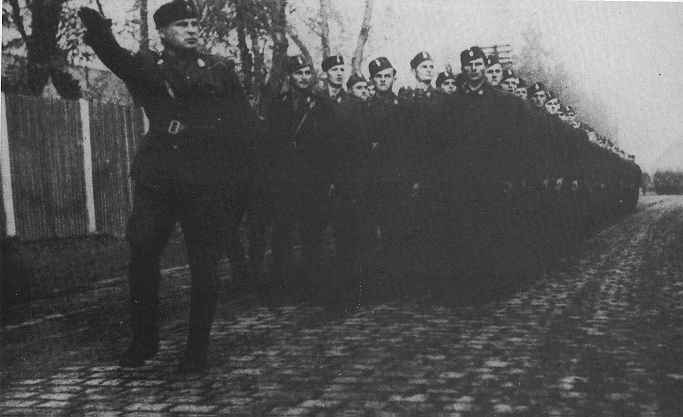Nationalism and Neo-Nazism in the Balkans
Since
WWII, the swastika remains one of the most powerful and infamous
symbols on the planet. For most, myself included, it evokes images of
concentration camps and Hitler’s anti semitic agenda. However, in some
places, while still a sign of neo-nazism and hate, it has a slightly
different connotation. I spent my summer two years ago in Bosnia and Herzegovina visiting my Croatian family. One day, I noticed a swastika
spray-painted on the back of a stop sign. I assumed it was the work of
an ignorant youth, but I soon noticed several of them painted around the
town of Mostar, where some of my family lives in Herzegovina. I
realized it was not a coincidence or the act of one fool, but it didn’t
make sense for Croats to hate Jews considering Balkan people have been
busy fighting each other for so long. I was appalled and, frankly, a
little scared. I asked my aunt how anyone could be so ignorant and
insensitive. The explanation that she gave me was surprising, but also
confirmed my belief: that whoever was painting swastikas was probably
not expressing anti semitic sentiments, but far-right, nationalist
sentiments. Basically, during WWII, a far-right, nationalist Croatian
group called the Ustaše sided with the Nazis believing that in doing so,
they would triumph and finally be able to form an independent Croatia.
Terrible acts of persecution and genocide were carried out by the Ustaše, but it was not the Jews that were targeted, it was primarily the
Serbs and Bosnians, (and to a lesser degree, the Romani). In
Herzegovina and Croatia, the symbol that most of the world associates
with anti semitism is more representative of support for the Ustaše, a
group well-known to have committed crimes against humanity. Sadly, the
swastika’s presence serves as evidence that the sentiments that brought
upon the bloody war that led to Yugoslavia’s split are alive and well,
and that some people would rather stall progress by continuing to live
with hate for their Balkan neighbors than accept each other and learn to
coexist.


Addendum: Please suspend judgment and remember that the far-rightists I speak of make up only a small minority. People like this are everywhere, and it is important to remember that here, in the US, we face similar problems regarding intolerance. By now, we have all learned of some of the atrocities committed by Americans throughout our own history; from the expulsion of the Native Americans to slavery in the south, ethnocentrism and bigotry have sullied our past as well.
ReplyDeleteA little research on the swastika will turn up a mountain of different meanings over time and across cultures - many of them positive meanings. At one point, some Native American tribes used it as a symbol of good luck. Of course, the symbol was forever tainted by the Nazis and its ongoing association with anti-semitic groups.
ReplyDeleteMany cultures have used it across cultures, and to emphasize on the comment above, many of those cultures them altered or changed the direction of the symbol in a different direction than the Nazi swastika. I believe that one of the Olympic teams had the backwards swastika on their flag or at least some how correlated with their country.
ReplyDeleteBe specific here. Which culture changed the symbol? Was this before or after the holocaust? Which Olympic team had the backwards swastika?
Delete"Of course, the symbol was forever tainted by the Nazis and its ongoing association with anti-semitic groups."
ReplyDeleteYes, exactly-- I am aware that the swastika had a life and history before the Nazi's adopted it as their emblem, but even knowing that the symbol far predates it's 20th century application, it is hard to look beyond what we, and most of the world, associate it with.
Yes, that's what I said too.
DeleteThis comment has been removed by the author.
Delete(LOL) I just realized that "Rowena" is Professor Rowe.
ReplyDeleteThe reply that I posted and deleted was the same as the comment above, except it was grammatically incorrect, so I had to fix it in order to live with myself, (just FYI).
ReplyDelete